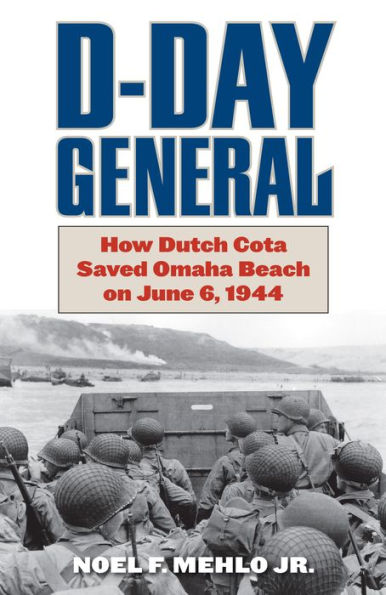Omaha was the make-or-break Allied beach on D-Day—in (perhaps) the make-or-break campaign of World War II. If American soldiers couldn’t gain a foothold there, then D-Day was unlikely to succeed. On June 6, 1944, U.S. troops on Omaha suffered the worst casualties of any of the five Allied invasion beaches—so many casualties, and so much tactical difficulty, that Omaha almost didn’t succeed. One big reason why Americans gained a foothold on Omaha was Gen. Norman “Dutch” Cota. A graduate of the West Point class of 1917 (alongside famous classmates Matthew Ridgway, Mark Clark, and Lightning Joe Collins), Norm Cota played football with Dwight Eisenhower, who graduated two years earlier. From March 1941 to February 1943, Cota served with the famous 1st Infantry Division, the Big Red One, as division intelligence officer, plans/training officer, and finally chief of staff. He performed so well in the North Africa campaign that he was sent to England to help plan D-Day. After laying the tactical groundwork for the amphibious landings, Cota was made assistant division commander of the 29th Infantry Division. On the eve of D-Day, he told his men, “You’re going to find confusion. The landing craft aren’t going in on schedule, and people are going to be landed in the wrong place. Some won’t be landed at all.. .. We must improvise, carry on, not lose our heads.”On June 6, 1944, under heavy fire, Cota landed with the second wave of the 29th Infantry Division on Omaha Beach, about an hour after the start of the invasion. He personally rallied the survivors of the landings and led the opening of one of the first exits off Omaha. Cota seemed to be everywhere that day. Coming upon a group of Rangers, the general told them, “Rangers, lead the way” (hence the Rangers’ motto). He is also known for saying, “Gentlemen, we are being killed on the beaches. Let us go inland and be killed.” And, to a captain uncertain how to proceed: “I’ll tell you what, captain.You and your men start shooting at them. I’ll take a squad of men, and you and your men watch carefully. I’ll show you how to take a house with Germans in it.” Having demonstrated the task, Cota asked the officer, “Do you understand? Do you know how to do it now?. .. I won’t be around to do it for you again. I can’t do it for everybody.”Great quips—which American military history will always remember and which show the character, in every sense, of Dutch Cota. Cota was a fighter—a fighting general, a D-Day general—and his contribution to D-Day will remain his rallying of demoralized troops and his blazing the trail toward the breakout and victory on Omaha. Ted Roosevelt Jr., who landed at Utah Beach, has always received credit as the D-Day general (like Cota, Roosevelt also demanded that he land on D-Day—and then died of a heart attack a month later), but Cota is the hero-general of the day, having landed early on D-Day on bloody Omaha. Portrayed by Robert Mitchum in the grand D-Day film The Longest Day, Cota has not yet received his due—and there’s a campaign now afoot to award him a belated Medal of Honor. His story cries out to be told. Now, with the cooperation of the Cota family, Noel F. Mehlo Jr. tells the compelling story Dutch Cota on Omaha Beach, revealing new information and never-before-seen photos.



